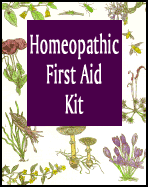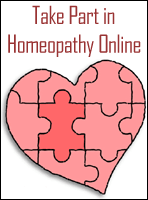Note: Homeopathic Treatment requires strict individualization. Please do not take any medicine without consulting your physician/homeopath.
cause, Symptoms, Treatment, Cure of Bronchial Asthma
#Ipecac [Ip]
This remedy is a close homoeopathic simile to asthma, especially
to the spasmodic variety where the symptoms are great weight and
anxiety about the chest; sudden wheezing, dyspnoea, threatening
suffocation, aggravated by motion; the cough causes gagging and
vomiting. The cough is constant, the chest seems full of phlegm,
yet none is expectorated, and the extremities are covered with cold
perspiration. Lobelia is a remedy which one usually classifies with
Ipecac. It has the great oppression of the chest and a weak sensation
in the chest which seems to come from the epigastrium, where there
is a feeling of a lump; there is nausea, profuse salivation; the
attack is preceded by a pricking sensation through the whole system.
It is most useful in bronchial and septic asthmas. The breathing
is exceedingly difficult, and is relieved by moving about. A pain
extending around the forehead from one temple to other and a pain
in the back at the last dorsal vertebra are also useful indications.
Arsenicum is quite similar to Ipecac in asthma, and attacks coming
on after midnight lead to the use of this remedy. With Ipecac the
expiration is especially difficult; vomiting when it occurs is apt
to relieve the attack.
#Arsenicum [Ars]
As stated above, Arsenicum has some similarity to Ipecac, but the
time of attacks is just after midnight. The patient has a great
deal of anguish and restlessness; he cannot lie down for fear of
suffocation. There is anxiety and general sweat, and if the patient
drowses off he is awakened with burning pain and soreness in the
chest. It is especially the remedy if the disease be chronic and
the dyspnoea habitual and dry and the patient aged. Apis has a suffocative
feeling, and the patient does not see how he can get another breath,
and the Bromine patient breathes very deeply as it seems as if he
could not get air enough into his lungs,while under Grindelia robusta
the patient on falling asleep ceases to breathe and awakes with
a start. Grindelia has been found clinically to benefit humid asthmas
and acute catarrhal asthmas, and Halbert states that 5 or 10 drops
of the tincture every hour during the paroxysmal state will greatly
palliate. Probably in higher potencies it would act curatively for
its symptomatology represents the typical paroxysmal features of
this disease. It has a peculiar symptom, a fear of going to sleep
on account of loss of breath which awakens him. Viscum album is
also clinically recommended. It has weakness of the respiratory
and stertorous breathing. The asthma of Arsenicum is accompanied
by great debility and burning in the chest, and it follows Ipecac
well,and is especially useful in anaemic persons. Baehr and Jousset
place this remedy at the head of our list for asthma.
#Nux vomica [Nux.v]
Nux vomica is a useful remedy when the asthmatic attacks are brought
on by gastric disturbances; simple spasmodic asthmas; there is some
relief by belching, the patient must loosen the clothing. It must
also be thought of in those who drink much coffee or liquor. Irritable
bilious temperaments also correspond to the drug. Zingiber is also
a remedy for asthma of gastric origin , and the attacks come on
toward morning; the patient must sit up; no anxiety. A good symptom
calling for Nux is a constricted felling at the lower part of the
chest. Where there is much abdominal irritation present with much
flatulence, Lycopodium and Carbo vegetabilis should be thought of.
Carbo vegetabilis also corresponds to the asthma of the aged who
are much debilitated; they are greatly oppressed for breath and
are relived by belching wind.
#Kali bichromicum [Kali.bi]
The potashes produce asthmatic condition, and under Kali bichromicum
we find the attacks coming on about three or four o'clock in the
morning, compelling the patient to sit up to breath; he sits up
and bends forward which relives somewhat, as does also the expectoration
of stringy yellow mucus, which is characteristic of the remedy.
It is similar to Arsenicum except for this feature of tenacious
mucus. Kali carbonicum has asthma worse towards morning,with a feeling
as if there were no air in the chest. Kali phosphoricum has been
successfully used in asthma, especially in the nervous variety.
#Natrum sulphuricum [Nat.s]
This remedy has established a record in curing asthma. Its general
symptoms are worse on change to damp weather. It was one of Grauvogl's
hydrogenoid remedies. Its symptoms are moist asthma, with a great
deal of rattling in the chest. The symptom of looseness of the bowels
after each attack has been repeatedly verified; in one case the
patient was worse from aerated waters and alcohol. If symptoms indicating
a sycotic taint be present,it will be all the more strongly indicated.
The attacks generally come on about 4 to 5 o'clock in the morning
with cough and raising of glairy slime; expectoration greenish and
copious. The asthma of hay fever finds one of its remedies in Natrum
sulphuricum, and another in Sabadilla, especially if much sneezing
be present. Another symptom of Natrum sulphuricum which is characteristic
is that the patient must sit up and hold the chest with the hands
during the attack. Hypericum. Dr.T.F.Allen relates a severe case
of asthma, having the symptoms, "dryness of the throat always
worse in foggy weather," cured by Hypericum.
#Antimonium tartaricum [Ant.t]
is a remedy used largely in some form by the allopathic school in
asthma, and it is homoeopathic to certain cases. The great keynote
for the remedy is the presence of fine mucous rales throughout the
chest, finer and smaller rales than are found under Ipecac. With
this remedy the chest seems full of phlegm, with inability to expectorate
it. There is great dyspnoea, the patient must sit up, and there
are suffocative attacks coming on as in the potash preparation (
and this contains potash ) about three o'clock in the morning. Like
Ipecac, too, there is great difficulty in the expiratory effort.
Antimonium tartaricum is especially adapted to the extremes of life,
suiting the asthmatic attacks of the aged and the dyspnoea of the
young children when due to pulmonary affections. The sensation that
the patient cannot get air enough is characteristic of the remedy.
Blatta orientalis has obtained a good clinical record in acute and
chronic asthmas, and is well worthy a trail in obstinate cases;
precise indications are wanting.
#Moschus [Mosch]
Intense anxiety, intense fear and a smothering sensation. It suits
those of a sensitive, highly organized, nervous temperament; neurotic
types when increased anxiety and nervousness predominate. Ambra
grisea. Dread of people, great desire to be alone. Silphium lancinatum.
Dr.A.F.Schulz, for Fort Wayne,Indiana, a very careful prescriber,uses
this remedy very successfully in moist asthma with expectoration
of large quantities of stringy mucus; rapidly exhausting. It is
light colored or yellow. Hale states that horses are cured of the
heaves by eating the leaves of Silphium. The 2x trituration is recommended. |


